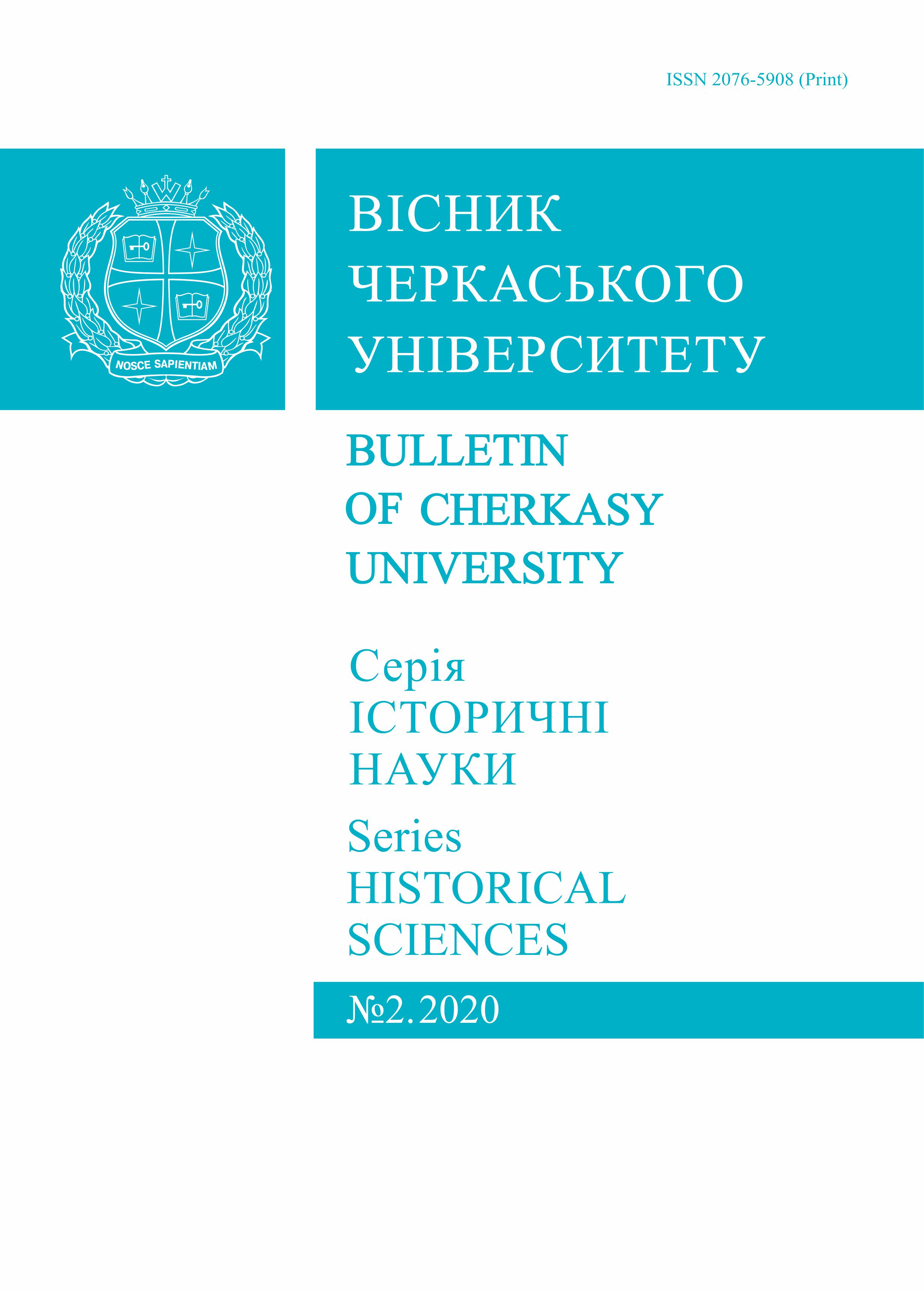Motherhood as a «Mission of State Significance» in the ideology and politics of the Third Reich
##plugins.themes.bootstrap3.article.main##
Анотація
Abstract. Introduction. In recent decades, gender studies confirmed itself as a very relevant trend in the world of science. In this context, it is important to explore the the mother cult. In particular, how the Nazis managed to attract a wide range of women to their side and also make them active participants in the National Socialist movement.
Purpose. This issue is partially considered by domestic scientists, so it deserves detailed and comprehensive consideration.
Results. If we summarize the views of the ideologues of Nazism, we can say with confidence that the main role in building the state was given to men. The woman had become a mother, homemaker, house keeper. Yes, men were given a primary role, and women - a secondary one, but it should be noted at once that National Socialism understood the world around it as male.
The main goals of National Socialism were to increase the number of racially pure population. As well as the creation of jobs for men by releasing women from this area. For practical implementation of these objectives was adopted a number of laws.
The Nazi party wanted to be sure that the woman would perform her duties and stay at home, not work. To this end, the National Socialist Party had to ensure that women adhered to the way of life and beliefs approved by the party. The Nazi party used a number of means to show Germans how not only to be a beautiful mother but also an ideal woman.
Conclusion. The government used the full potential of propaganda that was directed to the artificial creation of the “mother cult “ in which a woman would get the proper respect. As a result of a significant number of measures there was a change in morality. There was a devaluation of women, she was considered only from a biological point of view, as one that can procreate. As a result, the “mother cult”, which promoted Nazi government, only to some extent contributed to the achievement of the goals.
##plugins.themes.bootstrap3.article.details##
Посилання
Makarova, L. M. (2007). National Socialism in Gender Dimension. Dialog so vremenem (Dialogue with time), 19, 234-252 (in Russ)
Günter, Ĺ. (1934). Wir Frauen im Kampf um Deutschlands Erneuerung. NS Frauen Warte. Translated by Randall Bytwerk, Calvin German Propaganda Archive. Retrieved from: https://research.calvin.edu/german-propaganda-archive/fw2-17.htm
Goebbels, J. (1934). German women. Translated by Randall Bytwerk, Calvin German Propaganda Archive. Retrieved from: https://research.calvin.edu/german-propaganda-archive/goeb55.htm.
Rüdiger, J. (1938). Die Aufgaben des BDM. im Arbeitsjahr 1938. Das Deutsche Mädel. Translated by Randall Bytwerk, Calvin German Propaganda Archive. Retrieved from: https://research.calvin.edu/german-propaganda-archive/dm1-38a.htm
Supryigina, G. G. (2005). Mother cult in the Third Reich, its meanings and consequences. Vestnik Tomskogo gosudarstvennogo universiteta (Tomsk State University Bulletin), 288, 49-55 (in Russ)
Schreiber, A. (1940). Todesbereitschaft/Lebensbereitschaft. NS Frauen Warte. Translated by Randall Bytwerk, Calvin German Propaganda Archive. Retrieved from: https://research.calvin.edu/german-propaganda-archive/fw8-23a.htm
Linhardt-Köpker, E. (1940). Am Müttertag 1940. NS Frauen Warte. Translated by Randall Bytwerk, Calvin German Propaganda Archive. Retrieved from: https://research.calvin.edu/german-propaganda-archive/fw8-22a.htm
Ermakov, A. M. (2003). The Ten Commandments for Choosing a Mate, issued by the Imperial Public Health Committee, November 1934. Zhenschinyi v Germanii v pervoy polovine XX veka (Women in Germany in the first half of XX century). Retrieved from: http://yspu.org/hreader/1/?in=docs.4. (in Russ)
Ermakov, A. M. (2003). Marriage ads of the Nazi period. Zhenschinyi v Germanii v pervoy polovine XX veka (Women in Germany in the first half of XX century). Retrieved from: http://yspu.org/hreader/1/?in=docs.4. (in Russ)
Ermakov, A. M. (2003). Message “Frankfurter Zeitung” newspaper, January 6, 1937. Zhenschinyi v Germanii v pervoy polovine XX veka (Women in Germany in the first half of XX century). Retrieved from: http://yspu.org/hreader/1/?in=docs.4 (in Russ)
Rainey, S. (2013). Nazi Bride Schools: ‘These girls were the nucleus of the Reich’. Retrieved from: https://www.telegraph.co.uk/history/world-war-two/10247550/Nazi-Bride-Schools-These-girls-were-the-nucleus-of-the-Reich.html
Ermakov, A. M. (2003). The Law on the Protection of the German public health, and October 18, 1935. Zhenschinyi v Germanii v pervoy polovine XX veka (Women in Germany in the first half of XX century). Retrieved from: http://yspu.org/hreader/1/?in=docs.4. (in Russ)
Ermakov, A. M. (2003). Ordinance on the Protection of marriage, family and motherhood, March 9, 1943. Zhenschinyi v Germanii v pervoy polovine XX veka (Women in Germany in the first half of XX century). Retrieved from: http://yspu.org/hreader/1/?in=docs.4. (in Russ)
Gronov, K. (2016). A clever housewife knows how to remove a stain Women’s magazines in Nazi Germany. European Journalism-Fellowships (EJF).
Danzer, P. (1940). Das Leben muß siegen. NS Frauen Warte. Translated by Randall Bytwerk, Calvin German Propaganda Archive. Retrieved from: https://research.calvin.edu/german-propaganda-archive/fw8-13a.htm
Werner vom Hofe. (1938). Mein Junge. NS Frauen Warte. Translated by Randall Bytwerk, Calvin German Propaganda Archive. Retrieved from: https://research.calvin.edu/german-propaganda-archive/fw7-04a.htm
Ermakov, A. M. (2003). Working Mother Protection Act, May 17, 1942. Zhenschinyi v Germanii v pervoy polovine XX veka (Women in Germany in the first half of XX century). Retrieved from: http://yspu.org/hreader/1/?in=docs.4. (in Russ)

